- Home
- About Us
- Join/Renew
- Member Benefits
- Member Pages
- Log In
- Help
- Museum Store
Progress!!! The block is in the align boring machine. The crank is done and the cam is cleaned up. Hopefully the pieces will all be done by the end of next week.
Bill
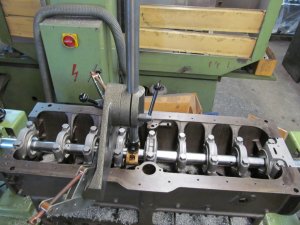
Here’s the cam.
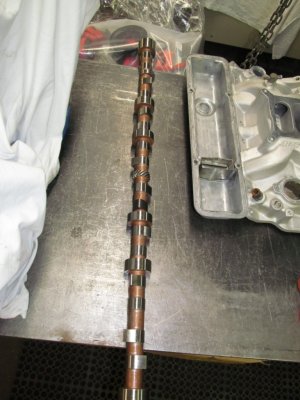
and the crankshaft. (The dampener has not been reinstalled yet.)
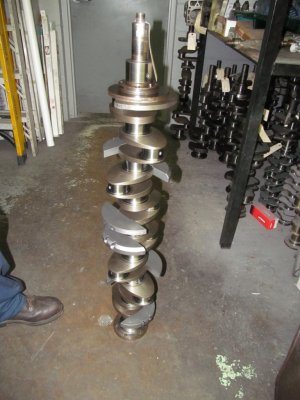
Water jacket side of the block.
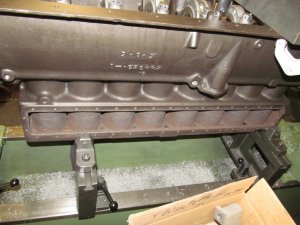
Hi Bill, thanks for sharing the progress-looks real nice.
Best-John
Two restorers have reported failures of Ross pistons in Pierce-Arrow engines. One restorer had Ross pistons fail in four engines. He contacted the Ross company and a representative was sent to check out the problem. In the end, the Ross representative concluded that their pistons were not appropriate for use the Pierce-Arrow long stroke engines. By implication, any piston of similar design could have a problem.
Here’s the latest.
All the boring is done. Once they got the block thoroughly cleaned they looked at the top deck and determined that there was pitting right in the sealing area of the head gasket and they predicted that I was getting some water past the gasket into (are you ready for this) CYLINDER NUMBER FOUR! I think that Rick Horne has earned the right to gloat.
Soooo, we’re resurfacing the deck. THEN it will be done.
Have fun at Hershey everyone! Why spend all that money going to Europe when you can go to your garage and live in Ancient Grease!
Bill
Hi Bill,
No need for gloating. One would think after 40 years of playing with engines I’d have found something better to do.
Glad you found the problem. Cruiser motor job is looking great.
Happy Motoring,
Rick
Bill, what was your choice of pistons? What did you do for cam bearings? Hope you enjoyed your trip! Ed
We’re using Egge’s new piston that has the Invar struts.
Cam bearings were sent out and spincast. Then align bored in the block.
Bill
To continue the discussion about clean piston tops. In the photos below are the piston tops of a ’34 Pierce 385 cubic inch 8cyl engine.
This engine never used any water, all the way from the Bay area to Temecula, and back, This route was through the Mohave Desert and 100++ degree heat.
The same engine used no water at all on the drive from the Bay area to Minden, and the 95++ degree heat. and all the long climbs on the tours..
But this engine used about 1qt of oil every 100-150 miles.
You can see the clean piston tops.. From the oil getting past the rings and washing the carbon off the pistons.
A piston top is cleaned by either the ‘steam-cleaning’ of a water leak, but this type of cleaning, in my experience is over the entire top of the piston, the water is forced into the carbon [if any] on the piston crown, and when the cylinder fires, the water flashes to steam and literally blows the carbon off the piston and the rest of the combustion chamber.
If a piston has clean edges, but carbon accumulation on other parts of the piston crown and in the combustion chamber, then the cause is oil washing off the carbon where the oil concentration is high enough to not burn completely and leave the piston wet with oil.
Greg L
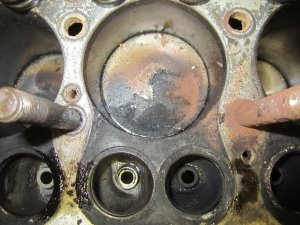
Any chance of getting a few photos of the pistons? Thanks, Ed
Here are a couple.
Second one.
Thanks Bill!
Here a few pics as I get closer to the assembly process.
KUDOs to John Cislak for sending me a plug for the end of the rear camshaft bearing. That part is made of “unobtanium”.
Thanks, John!
Bill
Second photo.
Bill, Shouldn’t a series 42 engine be gray? Ed
I always thought the either gray or black was acceptable.
PAS Service Bulletin 72-4 – “The standard color finish for Pierce-Arrow engines, especailly the straight-eights, was black enamel. Some owners have found their cars have grey, dark green, olive green or even red engines.”
